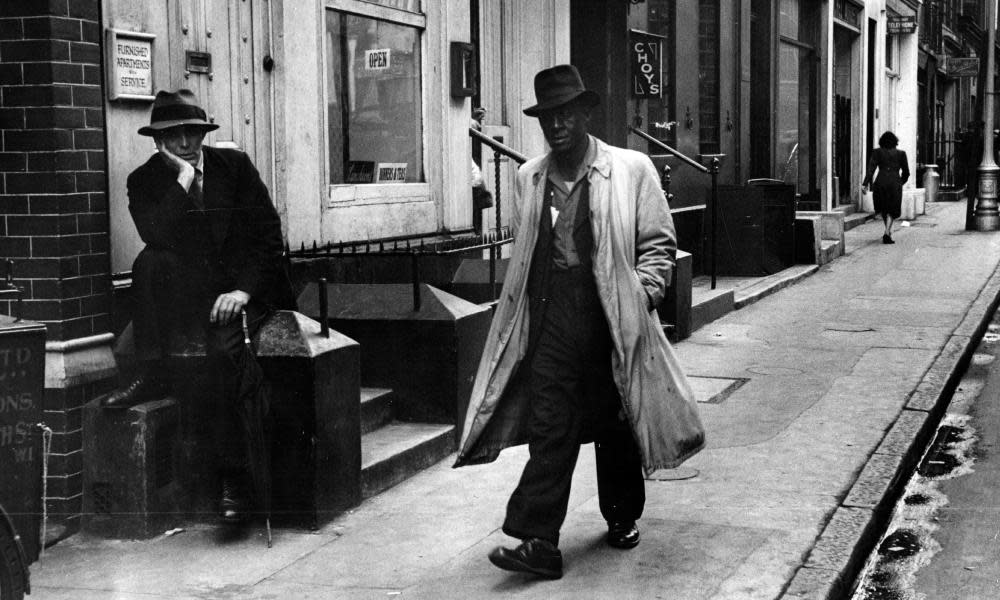Why Sam Selvon still reads like real life

The Lonely Londoners did something new with the English language, back in 1956. Part of the fascination of reading Selvon’s narrative voice today is that it also feels interestingly dated. The voices in the novel speak to us from a specific time and place, in accents that are rarely heard any more in London.
This feeling of entering a moment in time is reinforced because The Lonely Londoners has such a vivid documentary feel. Selvon’s fiction feels factual. “This is the real world,” he tells us - and you can almost imagine a camera drifting down fog-bound streets with his friend Galahad as he tries to make his way to the Employment Exchange, then climbing on to the bus with him:
When the bus come, Galahad pushing in front of the other people though Moses try to hold him back, and the conductor say, ‘’Ere, you can’t break the queue like that, mate.’ And Galahad had to stand up and watch all the people who was there before him get on the bus, and a old lady look at him with a loud tone in her eye, and a girl tell a fellar she was with: ‘They’ll have to learn to do better, you know.’
OK, that “loud tone” is a flash of literary brilliance. But still, like so much of Selvon’s narrative, it feels like a snapshot from life. The stories are always interesting. They’re often funny. Sometimes they’re upsetting, occasionally they’re pleasingly daft. But they always feel possible. Likewise, Selvon’s characters are variously witty, smart, sharp, foolish, vague and conceited. But they have the weight and presence of genuine people.
So real, in fact, that several acquaintances of the author are said to have tried to sue him after the book came out because they could see so much of themselves in its pages. What they saw wasn’t always flattering. The Lonely Londoners is almost brutally realistic about the people it describes. Selvon’s heroes aren’t idealised. They are young men in a strange and often unfriendly country, working menial jobs for low pay, living in overpriced accommodation on precarious terms. There are few women among them and no children. Unsurprisingly, they have the potential to cause trouble.
Much of the book is taken up with sexual misadventures, recreational drinking and the enjoyment of “weed”. There’s a certain glamour to the way Selvon describes these young men “coasting a lime” – but essentially they’re hanging about, staving off boredom and the loneliness that gives the book its title. There are petty thefts and petty resentments. There’s “sponging”. There’s abuse. One of the men – Lewis – is a wife-beater.
Even so, with the exception of Lewis, Selvon also succeeds in making his characters sympathetic. And it’s here that he does things documentary makers can’t do. He takes us inside their private spaces. Their cold bathrooms, the bedrooms where they seek human warmth. Inside their heads, too, where we hear the thoughts that make them “frighten”. Moses particularly shows us that under the “kiff-kaff laughter” and front and japes there is something else:
As if on the surface things don’t look so bad, but when you go down a little, you bounce up a kind of misery and pathos and a frightening – what? He don’t know the right word, but he have the right feeling in his heart. As if the boys laughing, but they only laughing because they fraid to cry, they only laughing because to think so much about everything would be a big calamity – like how he here now, the thoughts so heavy like he unable to move his body.
The intimacy Selvon grants us makes this book all the more poignant as a historical document, which also gives it contemporary resonance. It’s impossible to read The Lonely Londoners without feeling the shame of modern British politics. There’s also the fascination of recognising that while so much has changed, plenty remains the same. The exuberant descriptions of parks in summer and the laments over the paucity of public transport at night are instantly recognisable to anyone who knows London. Not to mention the emotions Selvon so expertly describes:
It have people living in London who don’t know what happening in the room next to them, far more the street, or how other people living. London is a place like that. It divide up in little worlds, and you stay in the world you belong to, and you don’t know anything about what happening in the other ones except what you read in the papers.
He forgot to add novels – but otherwise, that still feels like London to me. Not everything was different in 1956.


